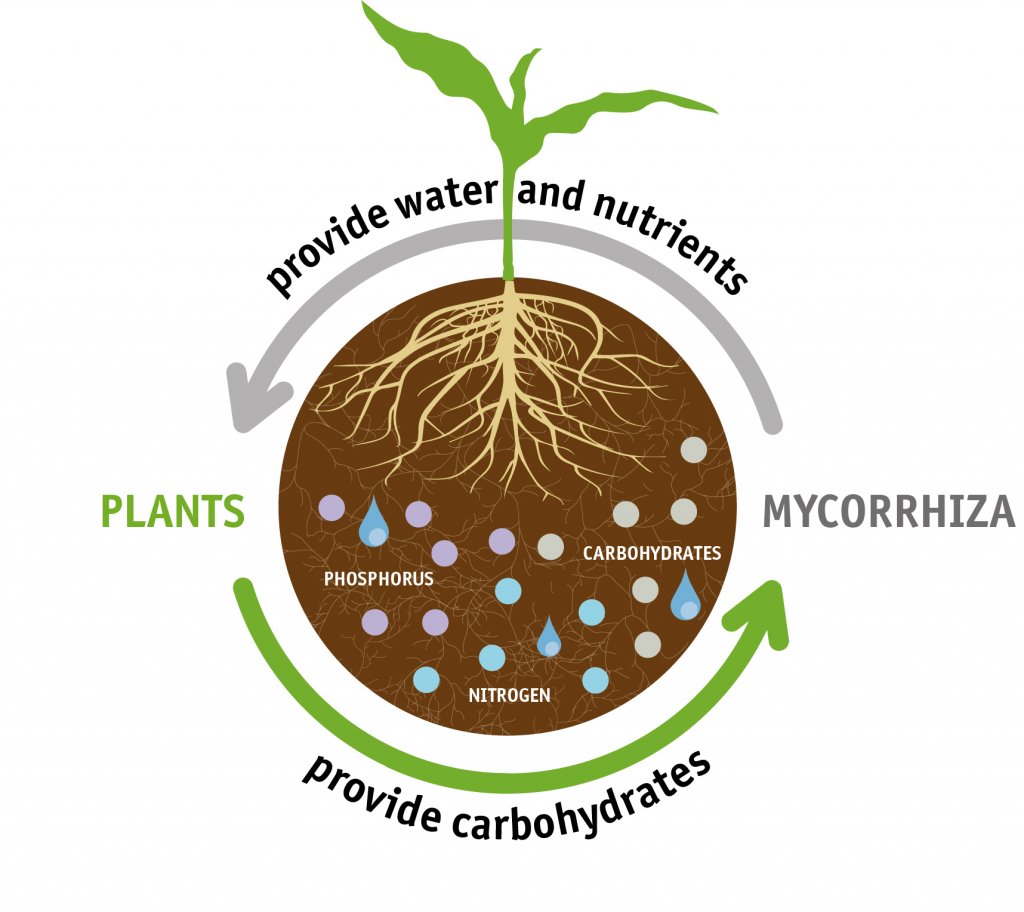What are mycorrhizae and how do they help plants ?
A mycorrhiza is a symbiotic association between plants and certain soil fungi in which the so-called mycorrhizal fungus colonises the fine root system of the plant. This expands the effective root area, which improves the water and nutrient supply for the plants.
What can mycorrhizae do?
In symbiosis with the plant mycorrhizal fungi not only increase the absorption area, water absorption capacity of the plant, and freely available nutrients, they also supply nutrients such as phosphate and nitrate. In addition, they are able to dissolve minerals/nutrients bound in the soil and make them available for the plant. Thanks to the improved nutrient supply, the plants are also better protected against abiotic and biotic stress.
Around 90% of all land plants rely on mycorrhizal fungi for optimal plant growth. But this type of symbiotic association also offers considerable advantages for the mycorrhizal fungi, as they receive from the plant essential carbohydrates - derived from photosynthesis – that they cannot produce themselves.

What are abiotic and biotic stresses?
Plants are exposed to a variety of environmental influences. Stress factors are environmental parameters that impair plant reproduction, fruit formation and plant growth. A stressed plant will not reach its yield potential. Quality reduction and yield losses are often the result.
Abiotic stress
Abiotic stress is caused by inanimate environmental influences (Greek; abios = without life). Abiotic stress factors are, e.g., frost, heat, drought, lack of nutrients, soil salinity and a too high or too low pH value of the soil.
Biotic stress
Biotic stress is caused or influenced by living beings (Greek; bios = life). All influences of the living environment can have a negative effect on plant health and growth. Biotic stress factors include infestation by pathogenic viruses and fungi, parasites and insects.